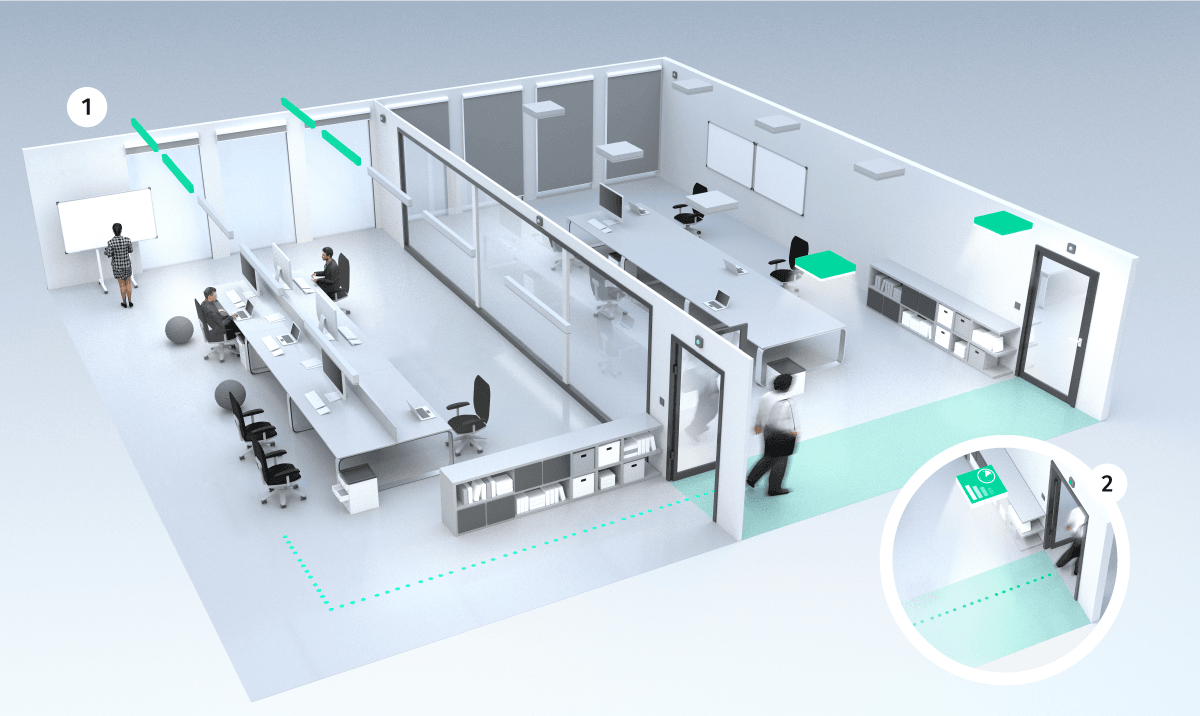
Have you ever been out and then remembered that you have not turned off the lights in the room or felt scared when entering a dark room and trying to find the switch. Do you know that lighting represents a significant portion of energy expenses in most buildings, surpassed only by HVAC equipments. However, MEC’s engineers believe that lighting energy consumption can be reduced by using systems that only keep lighting on when needed. Occupancy sensors helping automatically control lighting, achieving considerable savings is one of the best systems.
In simple terms, occupancy sensors turn on the lights automatically when human presence is detected, and turn them off once the scan area is empty. There are many types of occupancy sensor technology on the market such as infrared, radar, body temperature, etc, but according to the experience of MEC engineers, motion sensors are the most popular because of its convenience. The scan range of the motion sensor is from 1 to 3 meters, which depends on every device. When there is a movement in the scan area, the sensor will send a command to supply the power to make the light on and when the movement is over, the light will remain on for a certain period of time before turning off.
Lighting motion sensors were convenient and now they have become part of an energy management strategy for minimising lighting power consumption. However, MEC engineers recommend that it is important to choose the right sensors for each application, and to place them where they achieve optimal scan coverage. Also, occupants should consider that some lighting systems have a fixed operating schedule, so time-based controls are a better option in these cases.
